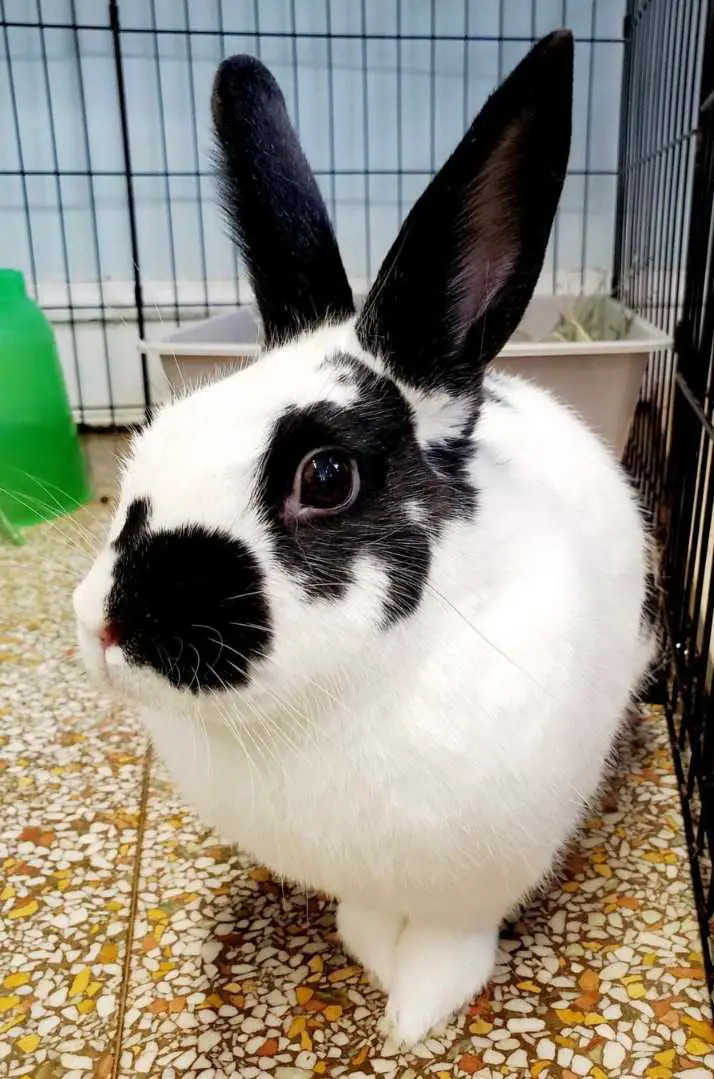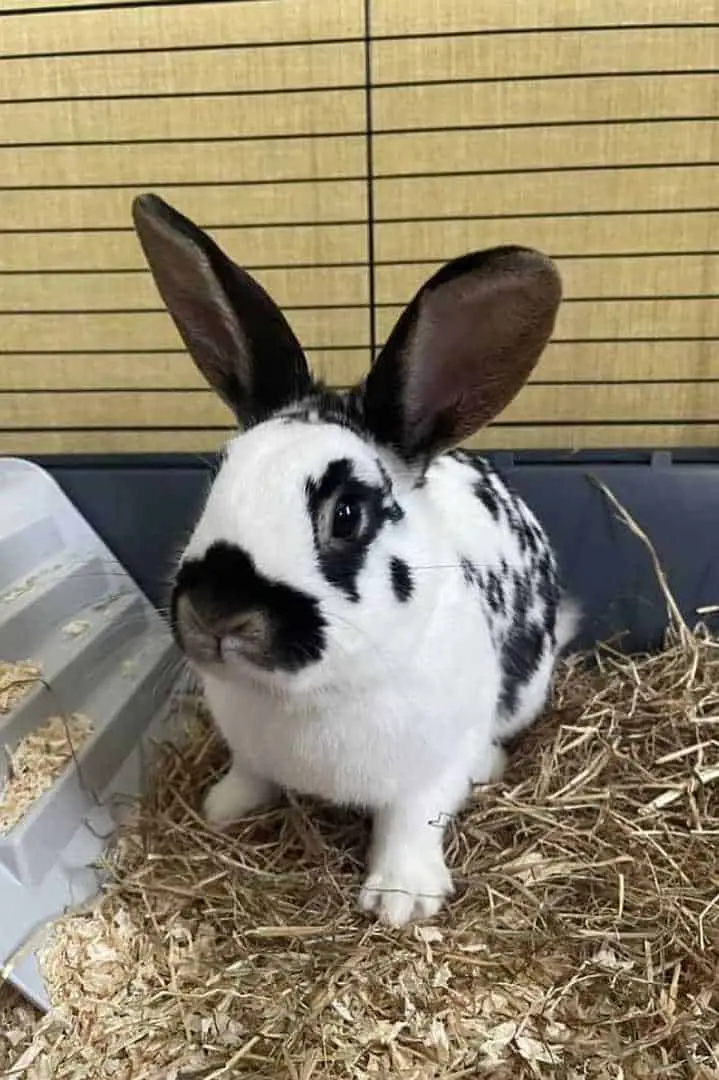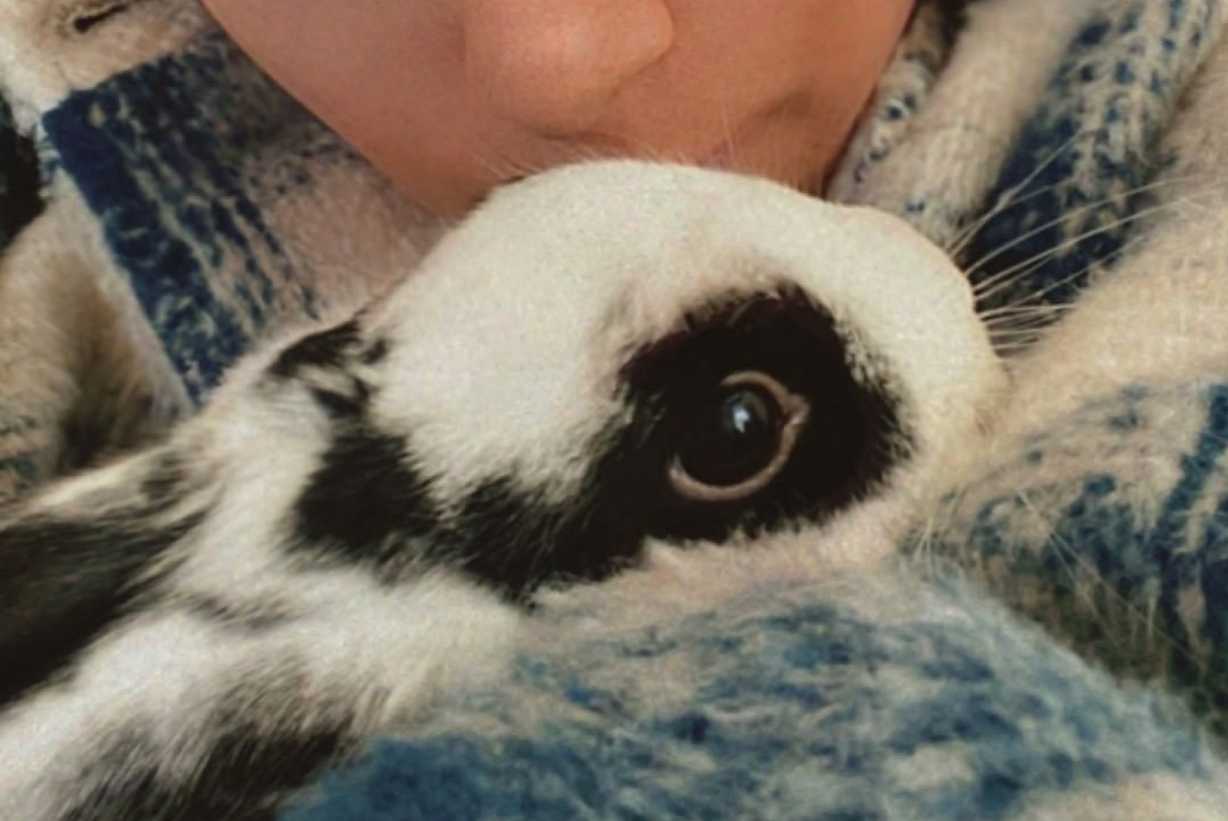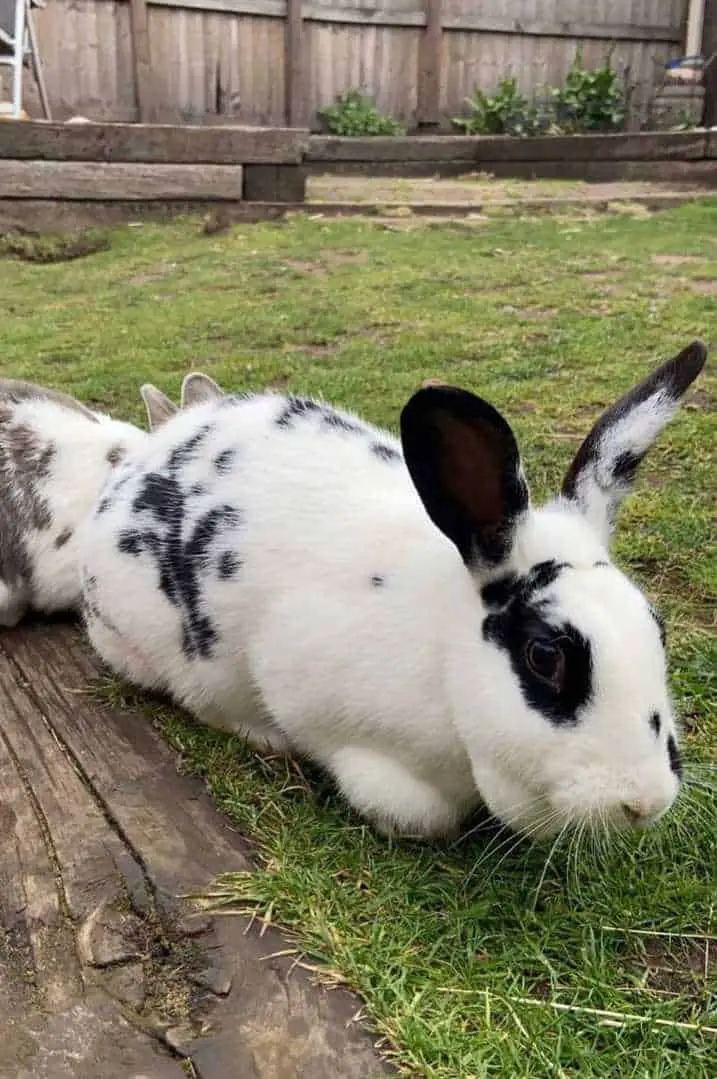Do you want to keep a rabbit as a pet? Bunnies are just like dogs and cats in terms of cuddliness and intelligence. However, they require more attention.
Also, different breeds have distinct physical qualities. How about getting an English Spot rabbit? Continue reading to see if it’s the right breed for you.
English Spot Rabbit Short Breed Info Chart
The following table shows some quick facts about the English Spot rabbit.
Size | Medium |
Weight | 5-8 pounds |
Body Structure | Arched |
Lifespan | 5-9 years |
Temperament | Curious, energetic, friendly |
Color | Black, blue, gray, gold, lilac, chocolate, and tortoise |
Rarity | Common |
Similar Breeds | American Fuzzy Lop, Checkered Giant |
Best suited for | Homes with children, first-time owners, gardens, and farms |
English Lop Uncertain Background and History
The English Spot rabbit breed is one of the most ancient fancy breeds. However, its origin is uncertain.
Some claim the breed was created through selective breeding in the United Kingdom in the mid-19th century. It descended from the Giant Papillon or Great Lorrainese. Others believe they descended from the Checkered Giant.
Fancy breeds were unusual during those times. Breeders were primarily interested in meat production. Yet, the English Lop came into existence.
Most breeders believed this bunny is more related to the Checkered Giant due to striking similarities. These include colorful ears, butterflies, eye circles, herringbone, and cheek dots. However, the Checkered Giant is a larger breed.
Producers of the English Spot rabbits initially designed them as show rabbits. Thus, they became recognized for their beautiful markings. Those spots gave them their name.
The broken gene caused the English Spot markings. But there are many rules to follow while displaying this bunny. So, raising them as show-quality bunnies can be challenging.
The English Spot entered the United States around 1910. The American Rabbit Breeders Association (ARBA) recognized them after 12 years. Then the American English Spot Rabbit Club was established shortly after.
Today, the English Spot is a popular breed and an excellent choice for home pets.
English Spot Breed Standard and Appearance
Breed Standard
You should not find stray patches on a standard English Spot rabbit’s head. Its nose should have a marker resembling a butterfly. Both eyes feature a continuous strip of color around them.
The cheek spot is a circular-colored patch. Both ears should be thoroughly colored. A streak of color runs from the ear base to the tail end, forming the herringbone.
Basic Appearance
The English Spot is a medium-sized breed that weighs between 5 and 8 pounds. Their bodies have a complete arch, long thin legs, and hinds parallel to the body. They also have upright ears over their heads. Their round hips are more comprehensive than the shoulders.
English Spot bunnies have two paws in front that elevate them off the table. This condition allows light to shine through beneath the belly. They have well-rounded hips that are slightly wider than their shoulders.
The breed’s six different body markings make it easy to identify. These include colored ears, butterflies, herringbone, eye circles, and spots.
Coat
The English Spot’s unusual and attractive coat makes it great for displaying. This flyback fur is short, silky, and dense. It will go back to its original place if you stroke it the other way.
It doesn’t shed much and needs little grooming. It may pull off all year round, but you won’t probably notice because the strands are short enough. It could get trapped in your clothes rather than form clumps around your house.
Colors
The ARBA recognized numerous color variants for English Spots. These include:
- Blue
- Chocolate
- Gold
- Lilac
- Gray
- Black
- Tortoise
English Lop Fantastic Personality and Temperament
The English Spot was bred to be a show rabbit. Thus, it features one of the best personalities out there. It’s a friendly, curious rabbit breed with a captivating personality.
English Spots are accustomed to being scooped up, handled, and petted. They can be very devoted to their keepers. They’re also very relaxed and easy-going to fit in with any family.
They are usually highly playful and perform some amusing acrobatics. These bunnies are typically sweet and are ideal as pets and with children. This breed is far from dull, so English Spots like being around you, especially if you offer them toys or snacks.
No bunny wants to spend the entire day in its cage. So, make sure to give your pet enough exercise. Allow it to leave the enclosure regularly. It needs plenty of room to run and leap. This setup can help avoid undesirable behavior.
You should also respect the personal boundaries of your English Spot, especially if it’s new to your home. It may try to bite if it’s disturbed or frightened.
The ideal way to keep English Spot bunnies is in pairs, with a neutered male and a spayed female. They are friendly animals who cannot live on their own. However, do not house male rabbits together. They will likely fight, especially when a female bunny is around.
English Spots can get on well with other species due to their gentle and amiable temperament. These bunnies can get terrified by dogs and cats at first. But they will quickly warm up with them soon.
English Spot Known Health Issues and Treatments
The English Spot does not have any breed-related health issues. However, it’s also susceptible to the same diseases as other rabbits. You can find these significant concerns outlined below.
Flystrike
Flystrike occurs when flies leave their eggs on dirty fur patches. Then the eggs develop into larvae. They devour the bunny’s flesh from within and out. This condition can kill the bunny in a matter of hours.
Symptoms include listlessness, skin irritations, and seizures. Make sure to keep your bunny’s rear end clean, especially as it gets older.
If your pet can’t groom correctly, it will get muddy and vulnerable to flystrike. Check under its tail every day during summer, when it’s more exposed to such infestations.
Malocclusion
Malocclusion occurs when the lower and upper teeth are misaligned. Thus, the normal chewing process does not wear down your bunny’s teeth.
Take your pet bunny to dental checkups regularly. Make sure it gets enough hay as well.
Gastrointestinal Stasis (GI Stasis)
GI Stasis is usually a fatal disorder where the bunny’s digestive functions slow down or stop altogether. Symptoms are lack of appetite, tiny or no pellet bowels, and lethargy. It can get cured if treated early enough.
Ear Mites
Ear mites are a frequent parasite seen in pet rabbits. If your rabbit is afflicted, you may notice it tossing its heads. Seek professional help as soon as possible.
Back Issues
Your pet rabbit can suffer from back problems like other rabbits if mishandled or accidentally falls. Don’t miss out on regular vet visits. Doing this will help detect any health issues before they get severe. Also, ensure that you buy only from a reliable breeder.
Rabbit Hemorrhagic Disease (RHD)
RHD is a viral disease that attacks a bunny’s internal organs like the liver. It causes anorexia, fever, and internal bleeding. It can also cause death in some instances. You can prevent this illness by regular immunization.
Myxomatosis
Myxomatosis is a severe viral disease that causes puffy eyelids. It also causes harm to the eyes, skin, liver, lungs, and genitals. It also renders affected rabbits at risk of contracting other illnesses.
Myxomatosis spreads by fleas, mosquitoes, and wild rabbits. It is almost fatal once contracted. You can protect your rabbits from myxomatosis by having them vaccinated.
Encephalitozoon Cuniculi (E. cuniculi)
cuniculi is a parasitic infection that can cause severe sickness in rabbits. Possible symptoms are unsteadiness, urine incontinence, head tilt, and neck spasm. [Rabbit E. Cuniculi in Rabbits: Symptoms, Causes, Treatment, Recovery, Cost, and Prevention]
English Spot Regular Care Sheet
Cages and Supplies
Younger English Spot bunnies are pretty active. So, you’ll need a large enclosure where they can run around and play. It would be best to use wire for this with a sturdy frame.
The bottom section should be detachable since it’s where the bunny’s droppings will accumulate. A retractable pan can help quickly dispose of your pet’s droppings.
Additionally, use soft bedding on the enclosure’s floor. Also, have warm and soft cage bedding. Install a hay feeder on the enclosure’s side and fill it with hay. When your bunny is hungry, it can simply take some food from its feeder.
Clean your rabbit’s home regularly. Remove your pet from its cage and place it in a clean and secure container.
You may use baking soda, white vinegar, or lemon juice as a cleaning agent. Don’t ever apply household cleaners since they may contain harmful substances that might harm your bunny’s health.
If you wish to care for baby bunnies, you’ll need an extra or separate cage. Baby bunnies usually are born deaf and blind. Thus, it would help if you kept them warm and protected to maintain optimal temperatures.
English Spot bunnies like munching on anything they can get their hands on. Be aware that they will gnaw on light objects like wood if you keep them indoors. It could also bite on electrical wiring and prowl around risky areas in your house or yard.
Therefore, offer enough food or chew toys within its cage to eliminate any mishaps. Make sure to rabbit-proof your house before freeing your pet from its cage.
Exercise
Wild bunnies run about three miles every day. Therefore, you should also provide your pet bunny with regular adequate exercise. Applying this will help keep it occupied and delighted.
Your bunny should get around three hours to range freely every day. You can let it walk outside or just inside the house.
The English Spot is a social rabbit who enjoys spending time with you outside its cage. Of course, you can’t take it on hikes or runs. But you can engage it in the yard or entertain it inside your home.
You may also buy toys to play with to keep it mentally stimulated. It’s less likely to nibble on household stuff or show other damaging habits if it’s occupied.
Your bunny will require a large and safe enclosure if you wish to leave it unattended. You can build the section independently or attached to its cage. This step will protect it from predators. Hence, you won’t have to watch it every time.
Dietary Needs
The amount of food you feed your English Spot bunny depends on its age, size, and degree of activity.
Your pet should eat a piece of hay at least the size of its body every day. The grass is essential because it makes your bunny’s digestive tract run. It also wears down its teeth, making them less susceptible to dental problems. Hay should make up at least 70% of your bunny’s diet.
It will help if you give your pet pellets and fresh veggies in moderation. Provide supplemental pellets of high-quality supply more vitamins and minerals to keep your pet healthy. It should also have access to fresh water at all times.
Grooming
The English Spot rabbit has a low shedding rate. So, it doesn’t need much grooming. It would be best to brush it once a week or two weeks using a slicker brush.
You can brush it twice a week during the molting season. Make brushing your bunny more frequently during the shedding period a habit. This practice helps avoid wool blocks and protects the rabbit from chewing its fur.
When a rabbit molts, it sheds all its old fur to make space for new ones. Molting can occur once, twice, or even thrice a year. It depends on the rabbit’s breed.
Bathe your rabbit only on rare occasions. It’s not essential unless it’s filthy. Bathing it can be a terrible experience. It will stress it out. Instead, spot-wipe it with a moist towel. Wipe your bunny down with a towel before drying it with another one.
You should also cut your bunny’s nails regularly. Also, periodically inspect its ears and mouth for growing teeth.
Neutering or Spaying
Bunnies are typically promiscuous. So, you must limit this behavior by neutering or spaying them. Have your bunny neutered or spayed while it is still young.
Some veterinarians would wait until the bunnies turn six months before performing the surgery. However, others neuter English Spot bucks when they’re still young. They suggest this as a way to minimize hostility.
Furthermore, some veterinarians neuter bucks as soon as they reach three months, while others wait longer. Contact your veterinarian if you have any questions about neutering or spaying.
Summary
Another breed that makes a great pet is the English Spot rabbit. It is calm and not overly lively. However, it must have enough area to exercise, play, and express its natural impulses.
Look up information on the breed, known health issues, and care requirements. You might want to consider the English Spot.




